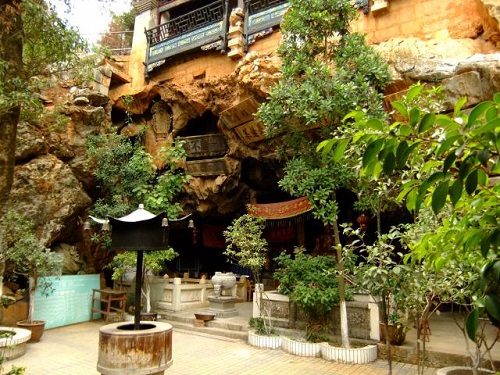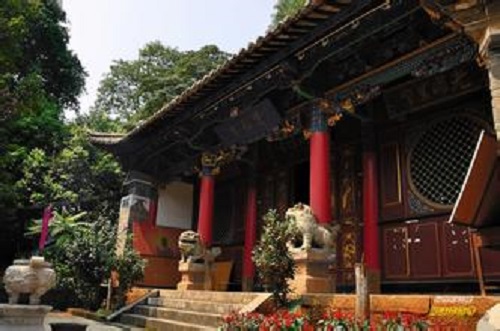
Yunwo Temple is located in the Zhongheying Township, 70 kilometers to the east of Kaiyuan and five kilometers far from town of Zhongheying.

The architectural design of the temple is elegant and the temple is a harmonious integration of natural and cultural landscapes including the hill, water, cliff, tree, stone inscription, poem and painting. Due to its abundant historic cultural contents and fine architectural techniques, the temple has been listed as a key cultural relic unit under the protection of the Yunnan Province. In the Qianlong Emperor period of the Qing Dynasty, a local official visited the East Mount and saw the strange rocks and strong water currents here, therefore he wrote Shuifu Yunwo (meaning “home of water and cloud”). Later, people built a temple and named it the Yunwo Temple. In the Jiaqing Emperor period, many buildings, including the Kui Tower, Wenchang Hall, Guansheng Hall and Weituo Hall, were constructed. The temple was also expanded and reconstructed in the Daoguang Emperor and Guangxu Emperor periods. Currently, the Daxiong Hall, Dragon God Temple, Wenchang Hall and Sky Gate of the temple still exist. The temple covers an area of more than 1,200 square meters in total. To its south, it is the Xinzhai Village. To its north, it is the Qutian Slope. Standing in the temple, you could see green farmlands and willow trees too. The landscapes designed and constructed by the nature and human are something that tourists should never miss.

“Cave in temple and water in cave” is an outstanding feature of the Yunwo Temple. The water current in the temple’s Laohei Cave is very strong and the sound of the water could be heard several kilometers away. The temple is actually located on a cliff and covered by green trees. In the cave, there is a deep pool, where the water wells up from the earth and spouts on the wall of the cave. The sound hears like the thunder and could be heard five kilometers away. Therefore, the cave is called the Water Sound Cave, the stream is called the Water Sound Stream, the village is called the Water Sound Village and the other name of the temple is the Water Sound Temple. Due to the steam, fog and veins, the inside of the cave is like a wonderland.
Admission Fee:¥0

You will only receive emails that you permitted upon submission and your email address will never be shared with any third parties without your express permission.
